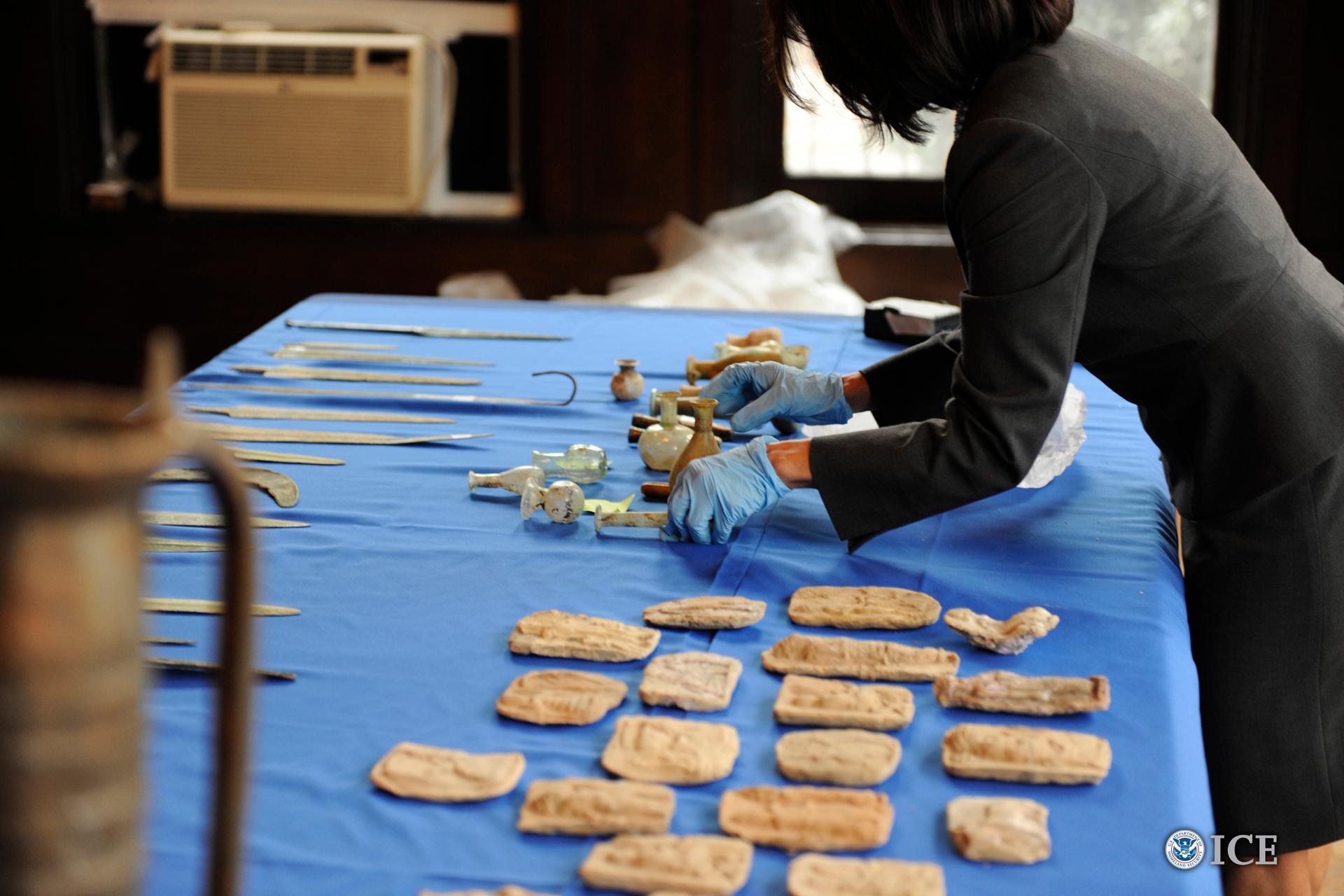With ISIS destroying priceless artifacts in Iraq, some museums are hesitant to return looted artifacts
Some artifacts, from more than 60 Iraqi cultural treasures illegally smuggled into the United States and were returned to the Republic of Iraq, are displayed on a table at the Department of Homeland Security.
Right now, some of civilization’s most historically significant artifacts are being destroyed by terrorist groups operating in the Middle East and North Africa.
Graphic images of looting and vandalism committed by the so-called Islamic State in Iraq and Syria have caused outrage around the world. Meanwhile, the destruction has sparked a serious and immediate debate among museum directors, scholars and archaeologists about what to do with art and artifacts from that region.
For centuries, museums in places like London and New York held ancient artifacts, removed improperly from their place of origin. But in recent decades, museums have begun returning looted items — a process known as “repatriation.”
Some officials, such as James Cuno, president of the trust that runs the Getty Museum in Los Angeles, are beginning to reconsider whether it’s advisable to repatriate a priceless artifact to a war-torn place like Iraq.
Cuno argues that the policy set up by UNESCO in 1970 is flawed. Under that convention, countries voluntarily agreed to try to prevent the looting and selling of cultural property, and if a nation’s artifacts were removed illegally, foreign museums were obliged to repatriate them. But, says Cuno, UNESCO “tries to encourage the repatriation of objects claimed by nation states simply because they claimed them, and not because there is evidence that they have been removed illegally or inappropriately.”
Cuno thinks the terrorist group ISIS presents a special paradox, because it appears to destroy some artifacts and sell others to raise money for its cause. While “no responsible museum is buying anything that might possibly have come from Syria or Iraq,” Cuno says, he wonders if that’s the right approach. “There might be a possibility that these things should be taken into protective custody by responsible museums around the world until they can be returned.”
Cuno maintains that the artifacts of ancient civilizations belong to everyone. “I think that we have a stake in world culture, everyone does, and that stake is to preserve it for the future.”
“Encouraging curiosity about the world’s artistic legacy is to encourage tolerance for difference in the world,” he adds.
For Cuno, this preservation happens in museums like the Getty. Many archaeologists and museum directors worry that this is a form of “neocolonialism,” but Cuno says if all museums work to protect these artifacts, we’re less in danger of losing them. “September 11 taught us that wonton destruction can occur in New York City,” he says. “It can occur in the places in which we have the most confidence — but it’s not likely to occur in all these places simultaneously.”
This story first aired as an interview on PRI's Studio 360 with Kurt Andersen.
